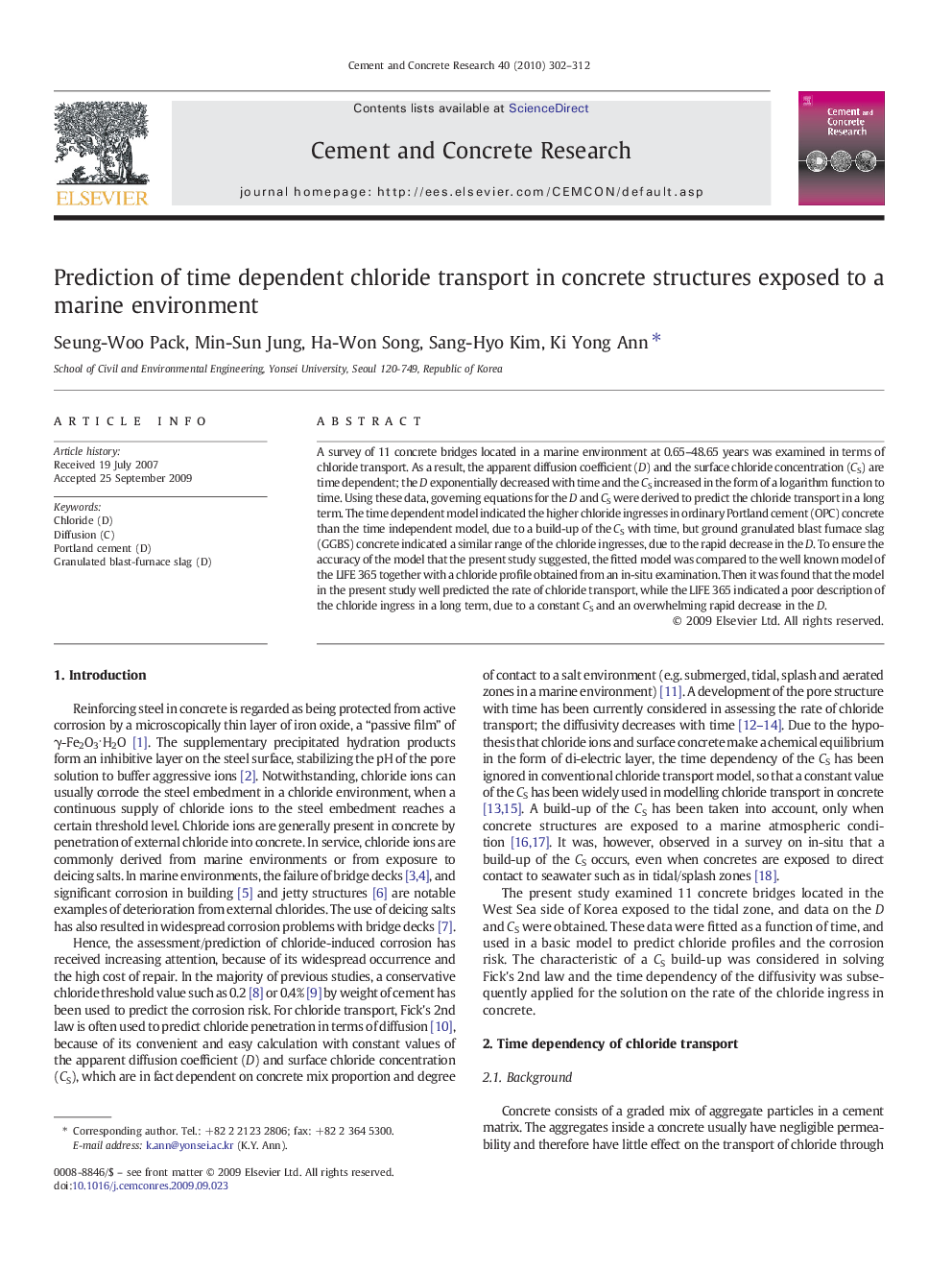| Article ID | Journal | Published Year | Pages | File Type |
|---|---|---|---|---|
| 1457169 | Cement and Concrete Research | 2010 | 11 Pages |
A survey of 11 concrete bridges located in a marine environment at 0.65–48.65 years was examined in terms of chloride transport. As a result, the apparent diffusion coefficient (D) and the surface chloride concentration (CS) are time dependent; the D exponentially decreased with time and the CS increased in the form of a logarithm function to time. Using these data, governing equations for the D and CS were derived to predict the chloride transport in a long term. The time dependent model indicated the higher chloride ingresses in ordinary Portland cement (OPC) concrete than the time independent model, due to a build-up of the CS with time, but ground granulated blast furnace slag (GGBS) concrete indicated a similar range of the chloride ingresses, due to the rapid decrease in the D. To ensure the accuracy of the model that the present study suggested, the fitted model was compared to the well known model of the LIFE 365 together with a chloride profile obtained from an in-situ examination. Then it was found that the model in the present study well predicted the rate of chloride transport, while the LIFE 365 indicated a poor description of the chloride ingress in a long term, due to a constant CS and an overwhelming rapid decrease in the D.
